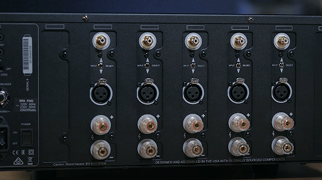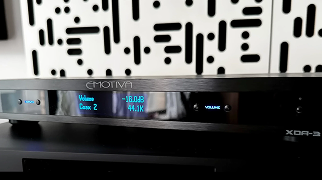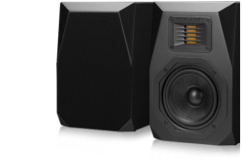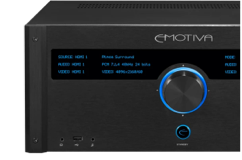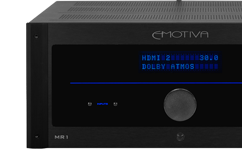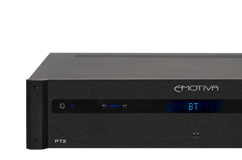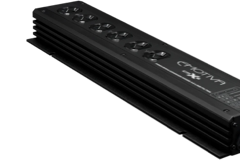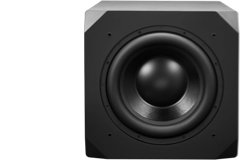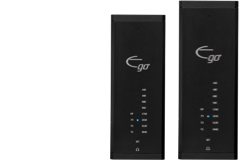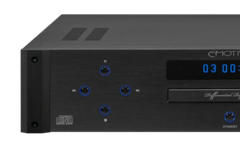
"The Ultimate Speaker and Amplifier Matching Guide" DUN DUN Da DAAAA- I feel like that should have sound effects around it.
Amplifiers and speakers need to be paired appropriately to ensure an efficient, high-quality output from your speakers. It can be difficult to select the perfect pairing of speaker and amplifier without testing out dozens of combinations, but we will cover a few key things you need to know to get you started on the right path.
Is it Required to Match Speakers and Amplifiers?
The amplifier and speaker always work together to reproduce the source audio signal. A speaker cannot operate without some kind of amplifier to drive it, and an amplifier doesn’t do much good without a speaker attached. Because of this two-way relationship, the characteristics of both the speaker and amplifier chosen can affect the quality and character of the reproduced sound. There are no absolutes with speaker-amplifier synergy, but understanding the specifications of each and how they interact can help make choices for amplifier and speaker pairings.
What to Consider
With a nearly infinite number of possible speaker and amplifier combinations available, it can be daunting to narrow down your selections. Below are a few primary characteristics to consider when matching speakers to an amplifier. Again, there is no absolutely “correct” pairing, and there are exceptions to all of these guidelines. But this is a great place to start.

Power (Ohms and Watts)
One of the questions we get most often is regarding the power handling of a speaker and what that means when looking at amplifier power specifications. For example, the Emotiva T2+ speakers are rated to handle 200 W continuous or 400 W peak power, but we recommend an amplifier of up to 500 W continuous for those speakers. It seems like such a powerful amplifier could potentially damage the speaker based on these ratings. However, this is not necessarily the case.
Using an amplifier with additional headroom above the speaker's power rating allows the amplifier to operate in a more comfortable range of its power output and have additional power reserves for peak volume and heavy bass content that momentarily require extra power output from the amplifier. The T2+ would only be damaged if you fed it continuous power of over 200 W for some time, which is not realistic in actual listening situations.
It is easier to damage a speaker by pushing an underpowered amplifier past its limit due to a condition known as clipping, which can quickly burn out the tweeter in a speaker or cause other damage.
Sensitivity
The sensitivity of a speaker helps us compare the level of sound output you will get from different speakers when fed the same amount of power. This specification is typically given with 1 Watt (2.83 V over an 8 ohm load) of power with output measured 1 Meter from the speaker across the industry.
For example, the Emotiva T2+ is rated at 91dB, while the number for the smaller T1+ is 88dB, both at 2.83V/1M. This means that at 1 Watt of power, you will get 3dB more output from the T2+ than the T1+. This is mainly due to the differences in cabinet volume between the two speakers, but many different factors determine the sensitivity of a speaker.
There is no rule for how many watts are required for a certain sensitivity rating. Still, this specification helps us compare different speakers and point us in the right direction regarding the amplification.

Impedance
The most crucial aspect of speaker impedance is to ensure that any amplifier you are using can drive the load presented to the amplifier by the speaker. Impedance is most commonly 4 or 8 ohms, but these are nominal values that vary through the speaker's frequency range. A lower impedance requires more amplifier current to maintain the same output level.
Presenting a load that is too low can draw too much current from an amplifier, shorting the output transistors or causing damage to an amplifier. Because total power is a function of voltage and current, the power output of an amplifier is typically rated higher into lower impedances.
Room Size
We measure sound output by measuring the Sound Pressure Level or SPL of the room that the sound waves are filling. The size of the space that we are trying to pressurize with sound waves plays a vital role in deciding exactly how much power is needed for a particular speaker to fill a room with sound.
For example, a pair of speakers in a 12’ x 15’ space may not require nearly as much power as the same pair of speakers set up in a 25’ x 30’ room to get the same SPL output. When in doubt, choose the more powerful amplifier.
Equipment Price
The equipment price should not be the main factor that determines your speaker or amplifier choices. While there is undoubtedly some correlation between price and quality, inexpensive speakers can be paired with more expensive amplifiers and vice versa with excellent results.
Focusing on the speaker’s requirements, the specifications of the amplifier, and how they work together will often lead to better performance than focusing on the price of the equipment alone.

What to Avoid
Along with all of the above factors, it is essential to avoid using speakers and amps in ways outside of their intended use or design. For example, amps will have an impedance range that will be stable to use. If the amplifier you are considering is stable down to 4 ohms and your speaker is rated at 2 ohms, these two pieces would not be compatible, and using them together could damage one or both of them.
Some unique speakers may have more specific requirements regarding the particular type of amp that can drive them. If you have doubts or concerns about using an amp and speaker together, it is always best to reach out to the manufacturers to see if they would advise the pairing.
Pairing Recommendations
Looking into Emotivas product line, some great pairs to consider are:
- T2+ speakers and XPA DR-2 amplifier
- T1+ speakers and XPA-2 amplifier
- B1+ speakers and A2 amplifier
Some popular speakers outside of our product line:
- Martin Logan Electrostatic speakers and XPA HC-1 monoblocks
- Klipsch RS 7 III Speakers and XPA-2 amplifier
- SVS Prime Pinnical Tower Speakers and XPA-2 amplifier
- JBL Studio 590 Speakers and BasX A2 amplifier
Sometimes the best way to find that perfect pairing between speaker and amplifier is to try different combinations until you find the right match for your listening style and taste. The same combinations will not work for everyone because we all perceive sound differently and have different priorities with our audio systems.
There are no absolute rules for matching speakers with amplifiers, which can make the pursuit of perfect sound both frustrating and rewarding. Hopefully, these guidelines can help you get started in the right direction.
Share Post



